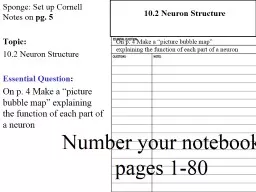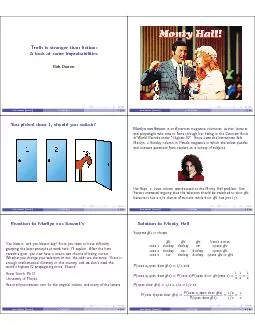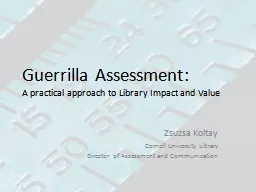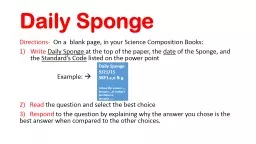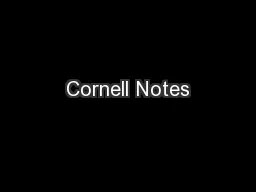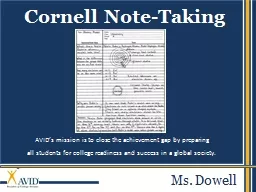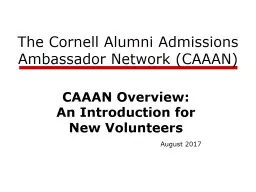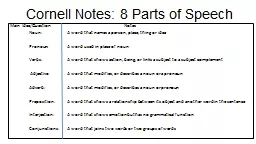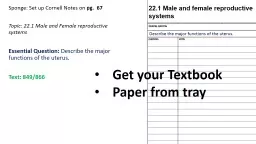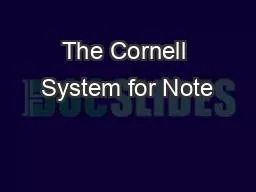PPT-Sponge: Set up Cornell Notes on
Author : mojartd | Published Date : 2020-06-23
pg 5 Topic 102 Neuron Structure Essential Question None 21 Atoms Ions and Molecules 102 Neuron Structure Number your notebook pages 180 Final Group Project Review
Presentation Embed Code
Download Presentation
Download Presentation The PPT/PDF document "Sponge: Set up Cornell Notes on" is the property of its rightful owner. Permission is granted to download and print the materials on this website for personal, non-commercial use only, and to display it on your personal computer provided you do not modify the materials and that you retain all copyright notices contained in the materials. By downloading content from our website, you accept the terms of this agreement.
Sponge: Set up Cornell Notes on: Transcript
Download Rules Of Document
"Sponge: Set up Cornell Notes on"The content belongs to its owner. You may download and print it for personal use, without modification, and keep all copyright notices. By downloading, you agree to these terms.
Related Documents

